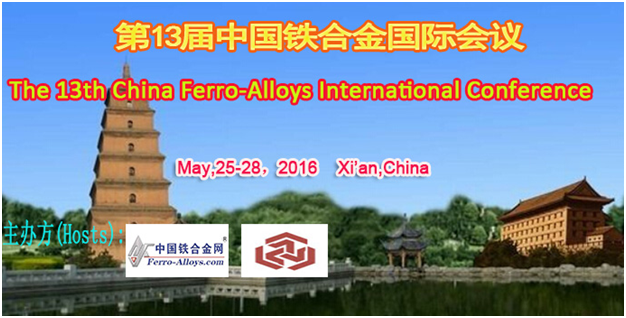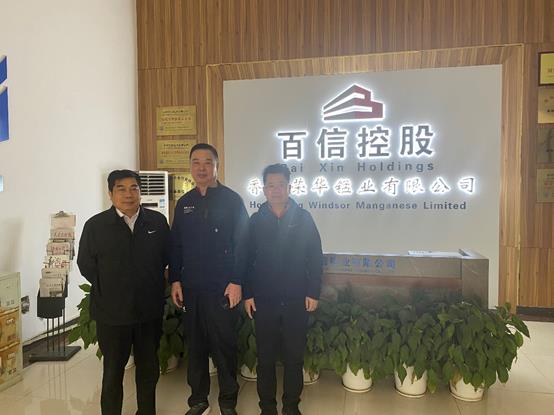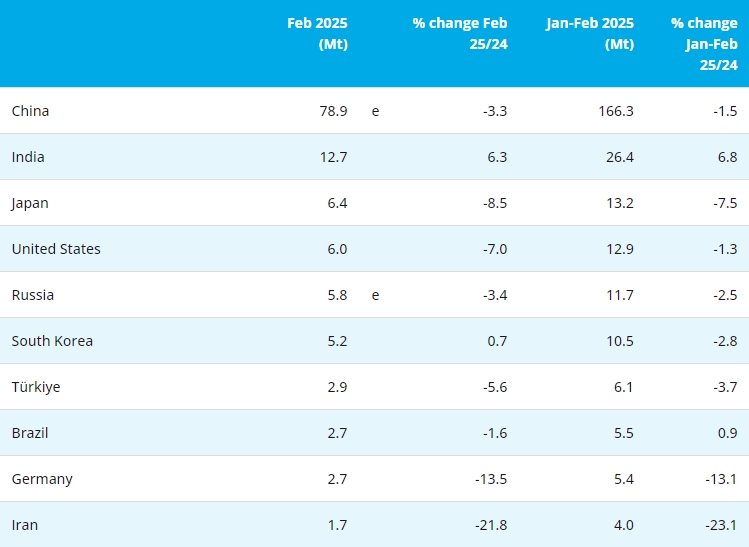[Ferro-Alloys.com]Prices of Chinese FeSi and EMM as well as Indian SiMn get weakened =
The market trend of import of ferroalloy as of 15 April 2016 is as follows.
<> Silicon Metal = The price of silicon metal in China continues to show an upward trend, and the prices of 5.5.3 and 4.4.1 low-grade products are up by CNY200 per ton from the end of February and up by CNY100 per ton ditto respectively. The operating rate in Fujian among the main producing areas goes up, but those in other areas are still at a low level, and the supply to the market has yet to catch up with the recovery in demand. Albeit the demand supply balance is subject to the timing when the producers will restart operation, many of market participants foresee the feeling of the tight supply will continue during April.

In Japan, in keeping with a price increase in China, both offer and contract prices have gone up slightly. However, there are large variations in the prices, and the range in the price increase for the high-grade products is bigger. The contract price of 5.5.3 grade is up by US$10 - US$20 from the end of March. For a reference, the distribution of relatively cheap 5.5.3 grade products of Xinjiang Uygur origin has recently increased, but it is often heard that there are many claims about qualities.
<> Ferro-silicon = In China, the price of ferro-silicon spiked in late March, but the buying movement slowed down at the end of the month and the price dropped back due to adjustment of high price. As of April 15, the price stops declining, and such situation is going on as the prices of products with Si being 75% and 72% are down by CNY250 and down by CNY100 - CNY150 from the end of March. Tianjin as a flagship port to ship ferro-silicon ceases a shipping inspection of dangerous products like ferro-silicon after the explosion accident occurred last August, but it seems the shipping inspection of the dangerous products is scheduled to restart shortly. The retrenchment in the inland transportation cost is expected to be reduced by the restart of shipping from the port of Tianjin.
As to the price of Chinese ferro-silicon in the Japanese market, the contract price of regularly exported product is down by US$10 - US$20 due to a decreased price in China. The price of products distributed in the market is down by around US30 due to a decreased domestic price in China even though the roundabout product continues to be scarce. However, there was a bid price of around US$900 in the recent tenders floated by several steel mills, which surprised market participants. Restart of distribution via Vietnam is unclear because the information is complicated.
The price of Russian product was lowered as is the case in the last time. Both offer and contract prices are down by US$20 from the end of March. Against a background of weak ruble, the price is showing a different movement from other sources.
<> Silico Manganese = The retail price of imported manganese ore in India does not drop declining, and the price of being more than US$5.00 per lb is still seen occasionally, but the price of silico manganese regained stability. The high offer price at more than US$1,000 which was seen at the end of March decreased, and some producers begin to offer a low price at less than US$900 on condition of a small lot. The price drop as a whole is found to be US$20 - US$30.
The customers in Japan which show reluctance to accept a price increase for the reason that the forecast about crude steel production is poor have strengthened the price downward pressure, but no influence to a price decrease is recognized in India because the sale takes place by using in-hand stocks. The contract price stays at being down by around US$10.
In China, the price continues to decline with a small range, and the main price of Inner Mongolian product is CNY5,400 - CNY5,600, down by CNY200 from the end of March. This decrease is equal to US$30 in U.S. currency. However, it seems no export contract was made for Japan.
<> High-carbon Ferro-chrome (including charge chrome) = The negotiation on the contract price of high-carbon ferro-chrome meant for Japan in the period from April to June is still going on, and it becomes quite likely that the settlement will be put off till late April. Supposing the price is down by Cents 10 from the prior period as is the case in Europe, the price will be US Cents 90.
For a reference, the situation of almost no trading of spot goods of high-carbon ferro-chrome having been clinched in Japan is going on.
<> Low-carbon Ferro-chrome = In the spot market where the trading is thin, the sales prices of the imported products of other sources and domestic products are lowered by a small range owing to the increase in the inflow of cheap Chinese products. Both offer and contract prices are down by around US Cent 1 from the end of March.
<> Molybdenum = The molybdenum spot price is up from the end of March, but stopped rising after having a small range increase as it's difficult to go up further in terms of the demand and supply balance. On the one hand, LME molybdenum price (cash seller and settlement) is US$12,300 per ton (= US$5.58 per lb), and also rose by a small range.
<> Manganese Metal = The current main price in the Chinese domestic market is CNY9,900 - CNY10,100 per ton, down by CNY100 from the end of March. The feeling of an anticipation of a price fall becomes strong because of an increase in the supply volume stemming from expanded recommencement of operation and a drop in the retail price of manganese ore in addition to the actual demand being weak. Besides, in China, it comes to an issue how the heavy metals which leak out of stainless steel food containers will affect the human bodies, and such social movement also can be seen as China Special Steel Enterprises Association raises an alarm against the use of food containers made of 200-series stainless steel. It is still possible that this movement will lead to a decrease in production of 200-series stainless steel. Incidentally, the production of 200-series stainless steel in 2015 comprised 29.3% of the total crude stainless steel production in China.
In Japan, the buying motivation by the customers is still weak, and the price downward pressure is also still strong. For that reason, the contract price is down by around US$20 from the end of March.

Copyright © 2013 Ferro-Alloys.Com. All Rights Reserved. Without permission, any unit and individual shall not copy or reprint!
- [Editor:Sophie]



 Save
Save Print
Print Daily News
Daily News Research
Research Magazine
Magazine Company Database
Company Database Customized Database
Customized Database Conferences
Conferences Advertisement
Advertisement Trade
Trade










 Online inquiry
Online inquiry Contact
Contact

Tell Us What You Think